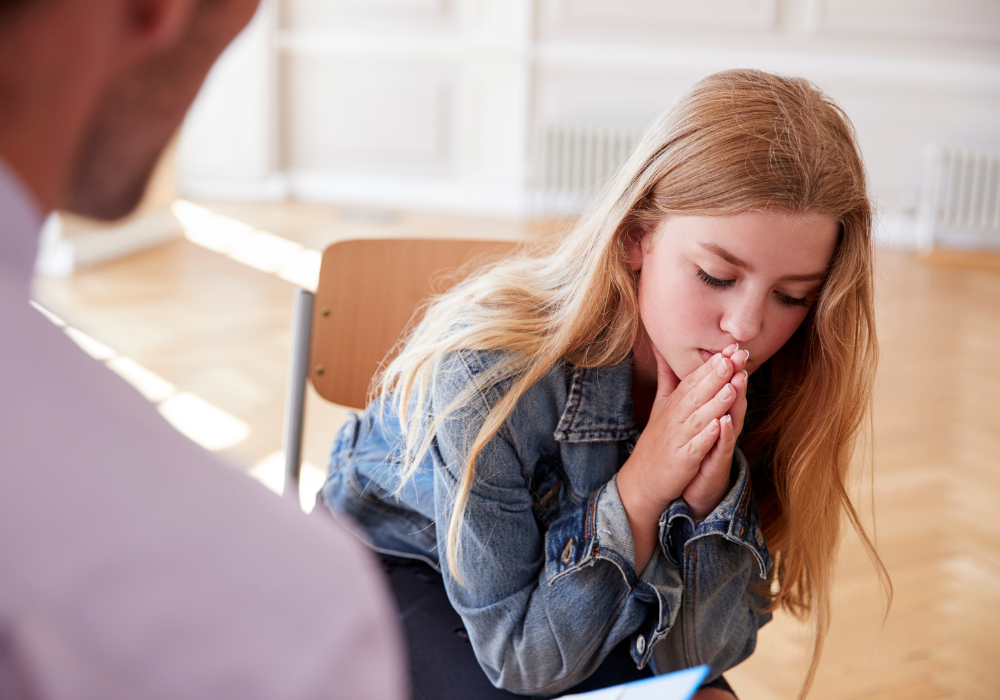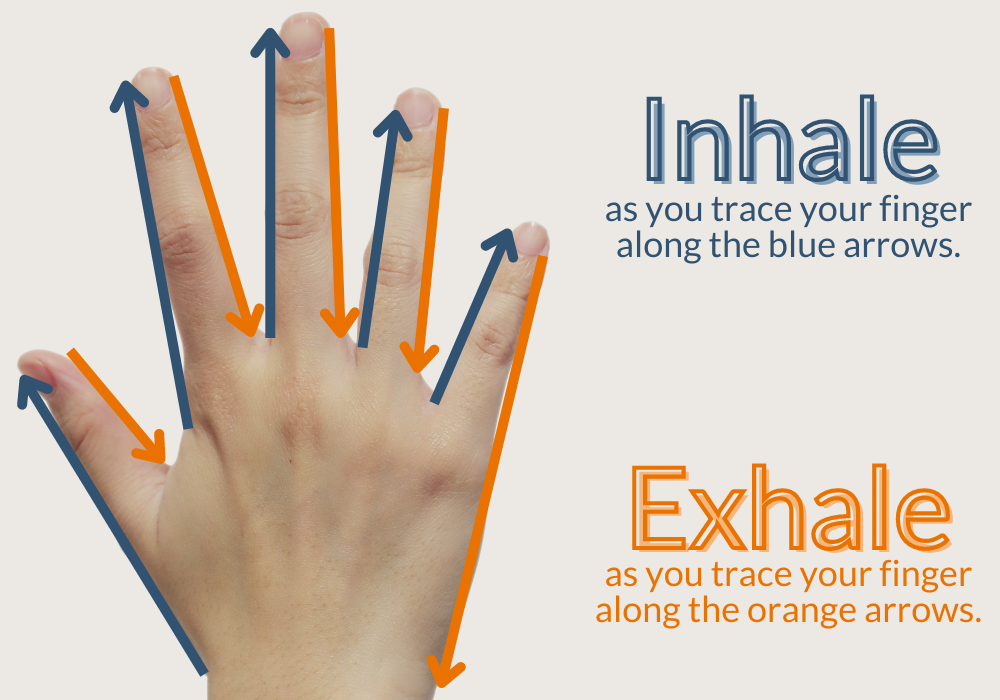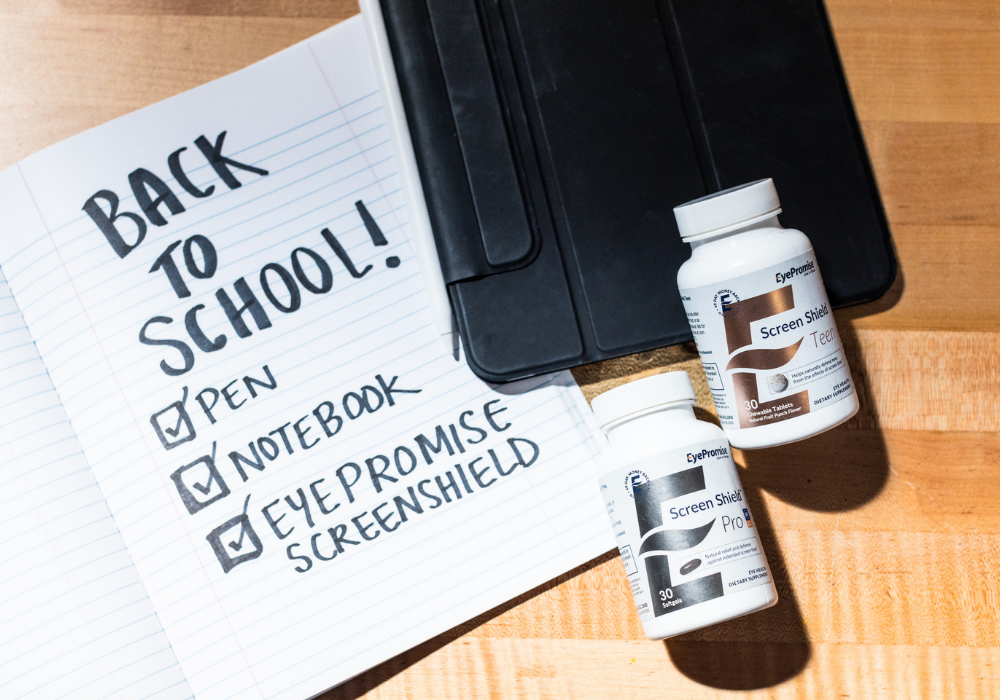The Stress of Back-to-School (and How to Help)
Posted by EyePromise on Aug 11th 2022
For some, that back-to-school feeling is something they’ve been looking forward to all summer long. For others, the feeling falls more on the anxious side. While experiencing anxiety is completely normal during the back-to-school journey, more students are reporting feeling stressed and anxious than ever before. Some health professionals believe that the pandemic helped increase these feelings, while others believe students are simply more vocal about their feelings. Whatever the case, here are a few ways to help students overcome the stress of back-to-school.
Know the Signs
For parents, it’s important to know what anxiety and stress may look like in students. First recommendation is to pay attention to the “basics.” How are they showing up for normal daily tasks? Are they taking care of themselves and others? Other signs that a student may be experiencing higher-than-normal anxiety include:

- Seeking reassurance more often or asking concerned questions despite already receiving an answer.
- Examples: "What if my friends are not in my class? When will I see them? What if I don’t have anyone to sit with at lunch because I have no friends? Will I be okay?"
- More physical complaints (i.e., headaches, stomachaches, fatigue) with no signs of an actual physical illness.
- Significant change in sleep pattern (i.e., taking longer to fall asleep when they normally fall asleep quickly or waking up with worries when they typically sleep through the night).
- Avoiding school-related activities like school tours, teacher meet-and-greets, or avoiding school itself once the year starts.
Other signs that may surface could warrant professional help. These include but are not limited to:
- Multiple physical symptoms like those mentioned above along with nausea, constipation, or diarrhea
- Decreased or increased appetite
- Irritability or increased crying
- Difficulty focusing or fidgety behavior
- Dropping grades and/or academic performance
- Behavioral outbursts such as kicking, hitting, or throwing
- Talking about suicide or death
Open Communication

After recognizing these signs, parents need to know how to communicate their concerns. It’s important that students feel like they have a safe place to share their feelings without judgment. Experts recommend offering a little more slack at home if students start to exhibit any of these symptoms. In addition to giving them space, offer a listening ear to what they’re experiencing. Sometimes venting can be enough to help students navigate these feelings.
Additionally, an open communication with the student’s teachers can help ease tension. Understanding what they’re dealing with on the scholastic side can help you better equip the student for handling or adjusting to such environments.
Establish a Routine (and Stick With It)
It’s probably not a surprise to hear how important routines are for students. It’s a well-established recommendation for quelling anxiety and stress because routine reduces the “unknown.” Dr. LaDonna Butler, Licensed Mental Health Counselor, shared this about routines:
“...routines are our best friend. So really settling down on a routine from what the end of the day is going to be, what our beginning of the day is going to be is so important to really establish a set of consistency for our kids.”
Tips to Help Kids Cope with Stress
Sometimes, no matter what parents/teachers/caregivers do, students will feel anxious and stressed. They need to know how to deal with and resolve these feelings. While there are specific tasks that can be geared towards the student’s interests, here are some suggestions for helping to cope with anxiety from a Mental Health Therapist.

- Be as prepared as possible. This may seem like an obvious one, but the sentiment is the same as creating a routine. The less surprises or unknowns there are about school, exams, projects, presentations, etc., the less anxious and stressed students tend to feel.
- Deep breathing techniques can help calm the physical response to anxiety and stress. One example of a technique that works well is to have the student trace their hand slowly with their opposite index finger. When their finger moves away from their palm, they should inhale. When their finger moves back towards their palm, they should exhale.
- Grounding techniques are also useful for quelling anxiety responses. One helpful technique that can work for students is the “Five Senses” technique. The student should look around their environment and find 5 things they can see, 4 things they feel, 3 things they can hear, 2 things they can smell, and 1 thing they can taste.
- Progressive muscle relaxation is a technique that can help control anxiety and stress. Simply tense or tighten one muscle group at a time, holding for 5-10 seconds, and then releasing that tension and relaxing for 10-20 seconds. Most techniques recommend starting at the extremities (arms/legs) and ending with the face, chest, and abdomen.
- Clear Fear is an app that can be downloaded and used to help coach kids through handling different emotions. While we wouldn’t recommend more screen time, the app uses different devices and suggestions to help kids not only cope with stress and anxiety but understand it better.
Nutrition
Research shows that nutrition can help reduce stress. Crunching on raw vegetables alone physically releases tension in the jaw to help reduce the impact stress has on the body. Here are some nutrients to start including in your student’s daily meal plan.
Zeaxanthin + Lutein
Clinical trials show that supplementing with zeaxanthin and lutein can significantly reduce stress, cortisol (the stress hormone), and symptoms of declining emotional and physical health. Additionally, zeaxanthin and lutein can improve brain function, specifically memory and focus.
Learn more about zeaxanthin and lutein for academic performance.
Vitamin C
Along with supporting immunity, Vitamin C can also help with stress responses. Studies suggest it can reduce the production of stress hormones. In fact, a clinical trial demonstrated that people's cortisol levels returned to normal more quickly when participants took Vitamin C before a potentially stressful task.
Vitamin E
Another important ingredient when it comes to immune health, deficiencies in Vitamin E have been linked with anxiety and other feelings of stress.
Zinc
Yet another critical ingredient for the immune system, zinc also plays an important role in reducing stress and anxiety. Unlike Vitamin C, zinc helps promote the production of "happy" hormones like serotonin and dopamine.
EyePromise® Screen Shield™
EyePromise, the #1 doctor-recommended eye vitamin brand, offers a line of products that are perfect for students and include all the ingredients mentioned earlier. The Screen Shield line was designed to help those who spend 2 or more hours a day looking at a digital screen protect their eyes. Each is safe to take with a multi-vitamin and helps to reduce symptoms related to screen time like tired, strained eyes.
EyePromise Screen Shield Teen is designed for kids ages 4-17 years old and comes in a one-a-day, fruit punch-flavored chewable tablet. This simplified formula only includes the ingredients listed above and does not include GMOs, gluten, or sugar.
EyePromise Screen Shield Pro is designed for adults ages 18 years and older and comes in a one-a-day softgel. A more advanced formula, this vitamin also includes important ingredients like bilberry, selenium, and Omega-3s.
The back-to-school rush makes a lot of people stress, but you can help your student avoid and cope with these feelings. Start utilizing the suggested techniques, and add EyePromise Screen Shield to your back-to-school list for one less stress!



